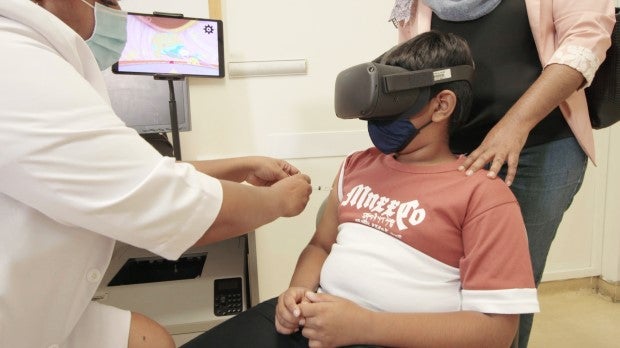
VR software shows potential in preventing vaccine hesitancy, infers SingHealth Polyclinics’ study.
A study by SingHealth Polyclinics (SHP) using a virtual reality (VR) software may just point the way to making vaccinations a more pleasant experience for families with children.

“The VR software known as SILVER diverts the child’s attention to the attractive virtual surroundings and helps reduce the pain signal. This is important, as pain can trigger phobia and distress in children for subsequent vaccinations,” said Dr Chang Zi Ying (above), Consultant and Clinic Director of SHP-Sengkang. Anxiety during painful procedures may also occur and this could heighten the child’s painful experience, added Dr Chang, who is the main author of the research paper.
SILVER (Soothing Immunisation Leveraging on Virtual Reality Experience) is a VR software co-created by Dr Chang and SHP’s Director of Research Dr Tan Ngiap Chuan, together with software engineers from AI2Labs. It was created specifically to distract children undergoing vaccinations and reduce their pain and anxiety. Once the child wears the VR headset and the animation starts, the child follows a two-minute story of a mascot called Burp. About one minute into the story, Burp uses a magic wand to tap on the child’s left shoulder, coinciding with the moment the nurse injects the child. SILVER was used in a pilot study among 30 children aged 4 to 10.
Other methods of distractions have been used in the past. For instance, parents may read or sing to the child or some may switch on a video on their phone or tablet. These are forms of passive distraction.
SILVER, on the other hand, works by immersing the child in a comforting virtual environment. When used in the study, SILVER reduced the anxiety score in children. It also helped decrease the anxiety score in their parents too. “It is equally important to alleviate anxiety among the parents. This makes them more willing to bring their children back for future vaccinations,” explained Dr Chang.
Using VR as a distraction tool is not new in healthcare. It was first used almost 20 years ago in adults who were undergoing painful procedures, such as changing of dressing in burn wounds. Although it is relatively new in paediatric procedures here, it has been used in countries like Australia.
The most common side effect of note from VR usage is giddiness. However, this mostly occurs only when it is used for more than 30 minutes — vaccination procedures are usually done in under three minutes. VR is not suitable for children with a history of epilepsy or migraines because the flashes of light may trigger an attack.
VR may not be necessary for younger children, said Dr Chang, as parents can better manage them by holding onto them during the vaccination. Children 4 to 10 years old, with their cognitive and emotional self-awareness more developed, may benefit more from having a distraction during their immunisation. Enhancing the pleasant experience of children undertaking the vaccination will ease their anxiety for future vaccinations.
Dr Chang hopes to roll out SILVER to other polyclinics in the near future as it is an acceptable solution to overcome immunisation barriers. “This is needed as adhering to childhood vaccinations protects the child from life-threatening infectious diseases such as measles, varicella and COVID-19. The importance of addressing children’s and parents’ anxiety towards immunisation would help in the success of the implemented COVID-19 vaccination among children. In addition, children who take the annual influenza vaccination will be protected from the rapidly evolving strains, which can spread readily in childcare facilities and schools.”
Get the latest updates about Singapore Health in your mailbox! Click here to subscribe.













 Get it on Google Play
Get it on Google Play